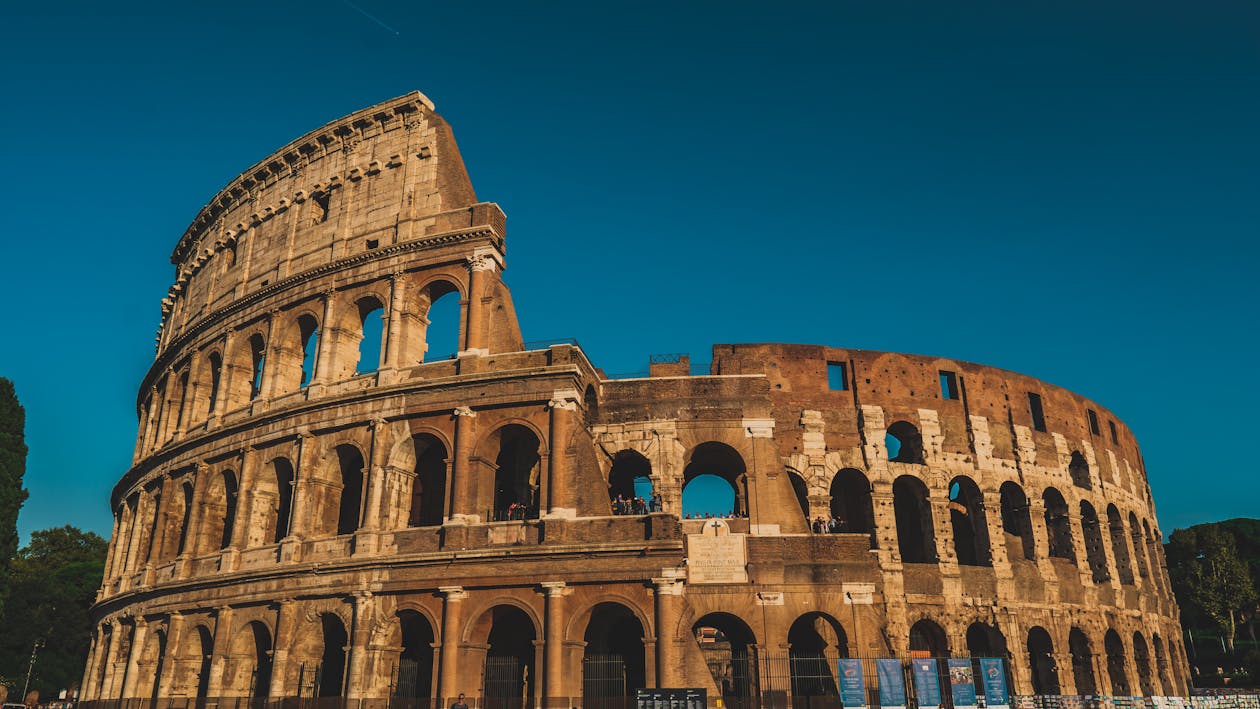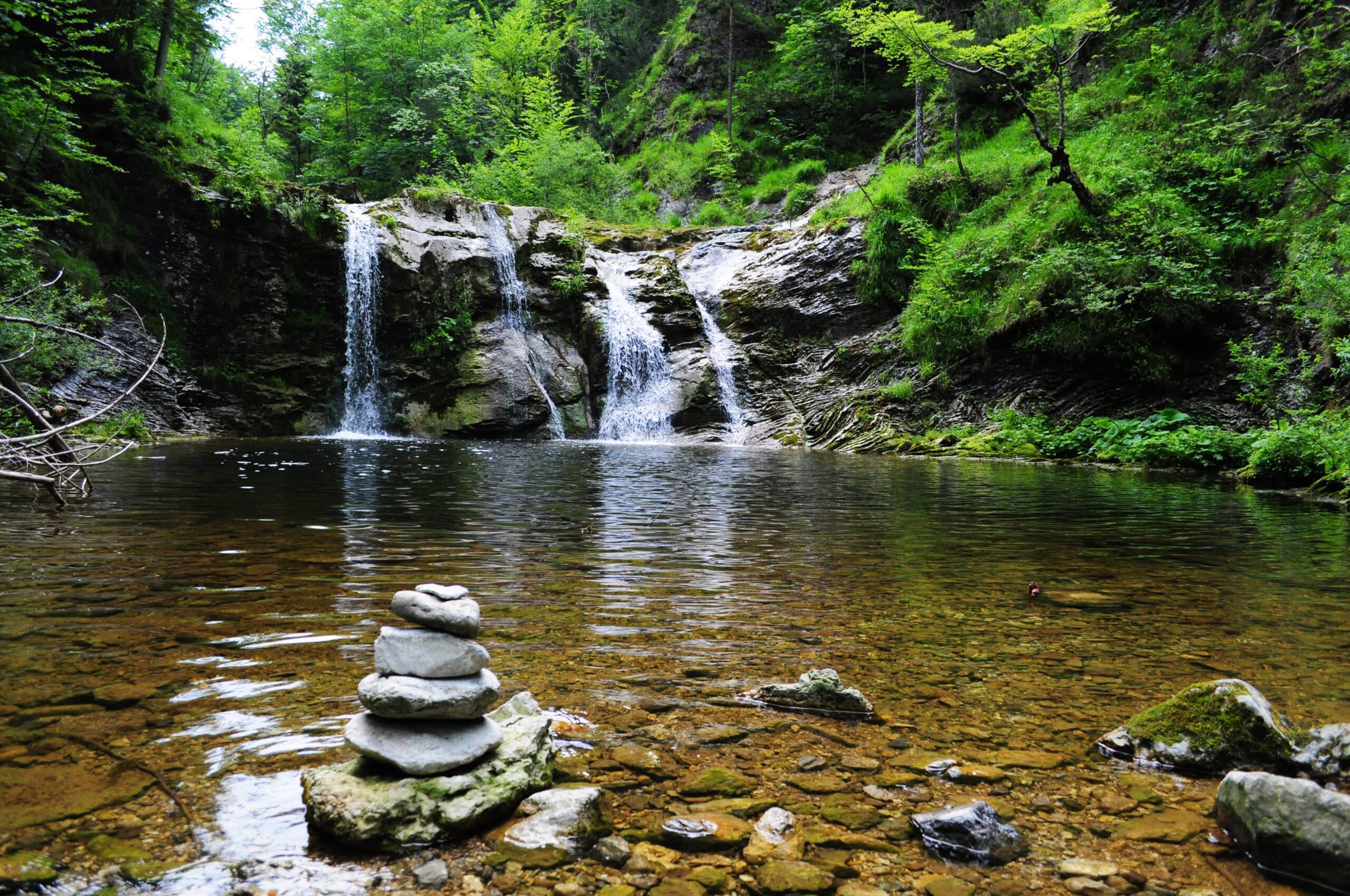Nestled in the lap of the majestic Himalayas, Muktinath is a sacred pilgrimage site that draws visitors from all walks of life. Known for its spiritual significance and breathtaking landscapes, Muktinath offers a unique blend of religious fervor and natural beauty. Let’s embark on a journey to discover the enchanting places in and around Muktinath that make this region a truly unforgettable destination.
1. Muktinath Temple
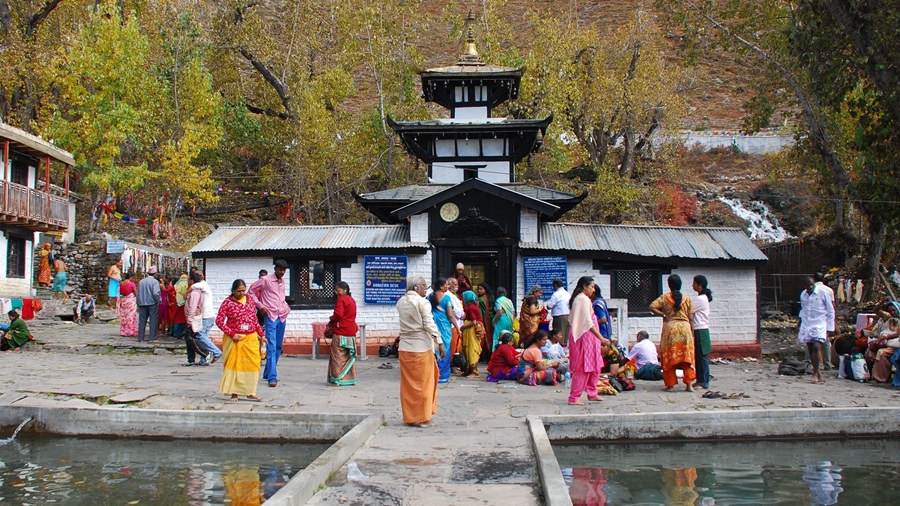
At an elevation of 3,710 meters, Muktinath Temple stands as a testament to the harmonious coexistence of Hinduism and Buddhism. The pagoda-style architecture, adorned with intricately carved wood and metal, serves as a visual feast for pilgrims. Devotees believe that a visit to Muktinath temple will cleanse them of the sins accumulated over a lifetime, providing a path to salvation. The temple complex houses 108 water spouts, Muktidhara, where pilgrims brave the icy-cold waters to purify their souls. Adjacent to the temple, the Jwala Mai Temple’s eternal flame emanates an otherworldly energy, symbolizing the perpetual connection between the divine and the earthly realm.
2. Kagbeni
As the gateway to the forbidden kingdom of Upper Mustang, Kagbeni is a living museum of ancient Tibetan culture. The cobblestone streets wind through ancient mud-brick houses, and prayer flags flutter in the Himalayan breeze. The Kag Chode Thupten Samphel Ling Monastery, with its imposing red walls, serves as a spiritual beacon, echoing the chants of monks who have inhabited this sacred space for centuries. The rugged landscape surrounding Kagbeni adds to the mystical aura, transporting visitors to a bygone era.
3. Ranipauwa
Ranipauwa, the bustling town at the foothills of Muktinath, provides a comforting respite for pilgrims and adventurers alike. The lively atmosphere, adorned with vibrant prayer flags, creates a unique blend of spiritual devotion and earthly vibrancy. The town’s guesthouses, cafes, and shops cater to the diverse needs of visitors, ensuring a seamless blend of modern comfort and ancient spirituality.
4. Thorong La Pass

For trekkers seeking the ultimate adventure, the journey to Thorong La Pass is both physically demanding and spiritually enriching. Standing at an awe-inspiring 5,416 meters, this high-altitude pass presents a panoramic spectacle of the Annapurna and Dhaulagiri mountain ranges. The trek to Thorong La Pass is a pilgrimage in itself, with each step a testament to one’s resilience and determination. The crisp mountain air and the crunch of snow beneath one’s boots create an atmosphere of transcendence as if walking amidst the gods.
5. Gomba Samba
For those seeking a serene escape, Gomba Samba, a Buddhist monastery near Muktinath, offers a tranquil haven. Surrounded by prayer flags fluttering in the mountain breeze, this monastery provides a sacred space for meditation and reflection. The confluence of Hindu and Buddhist elements in Gomba Samba reflects the cultural diversity that defines this sacred region, where traditions have intertwined for centuries.
6. Thini Village
Nestled amidst terraced fields and ancient stone structures, Thini Village is a living testament to the enduring traditions of the region. Traditional stone houses, adorned with prayer flags and surrounded by lush fields, create a picturesque scene. The villagers, deeply rooted in their cultural practices, welcome visitors with warmth and openness. As one wanders through the narrow lanes, the air is filled with the sounds of prayer wheels turning, offering a glimpse into the spiritual fabric that weaves through the daily lives of Thini’s inhabitants.
7. Kali Gandaki River
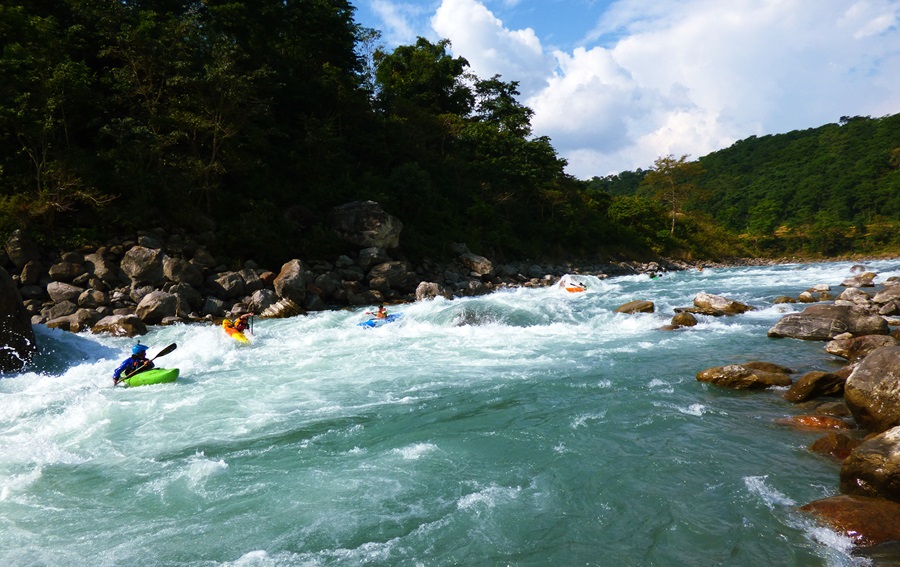
Flowing through the deepest gorge in the world, the Kali Gandaki River carves its way through the rugged landscapes surrounding Muktinath. Known as the “Black River,” its waters are believed to hold sacred properties. Pilgrims and trekkers often pause along its banks, not only to witness the mesmerizing beauty of the river but also to partake in the ritualistic act of cleansing their souls. The Kali Gandaki Gorge, flanked by towering peaks, becomes a passage for spiritual introspection as the river’s rhythmic flow accompanies the contemplative thoughts of those who traverse its shores.
8. Lubra Village
Perched on a hill overlooking the Kali Gandaki Valley, Lubra Village stands as a unique cultural enclave. The village is renowned for practicing polyandry, where brothers share a common wife, a tradition that reflects the scarcity of arable land in the region. The Lubra Monastery, with its ancient murals and artifacts, provides insights into the spiritual teachings that have been passed down through generations. The panoramic views from Lubra Village, encompassing both the sacred and the mundane, offer a contemplative perspective on the coexistence of tradition and change.
9. Ghemi Village
Tucked away in the Upper Mustang region, Ghemi Village emerges as a remote retreat. Accessible only by challenging trekking routes, the village remains untouched by modern influences. Traditional mud-brick houses and ancient stupas create an atmosphere of timelessness. The Ghemi Monastery, adorned with prayer flags that flutter in the thin mountain air, stands as a spiritual refuge amidst the rugged Himalayan landscape. Visiting Ghemi is not just a journey through space; it’s a journey through time, a connection to the ancient soul of the Himalayas.
10. Marpha
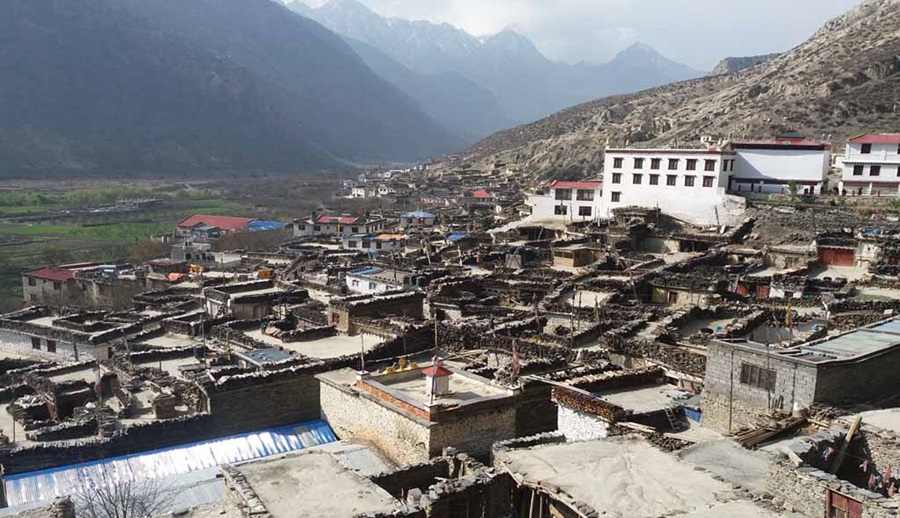
While not directly adjacent to Muktinath, a visit to Marpha is a culinary and cultural delight. Known as the Apple Capital of Nepal, the village is adorned with apple orchards that come to life during the harvest season. The sweet aroma of ripe apples fills the air, and visitors are often treated to local delicacies such as apple pies and apple brandy. The traditional white-washed buildings, combined with the majestic backdrop of the Himalayas, make Marpha a charming stop on the journey, highlighting the simplicity and warmth of Himalayan hospitality.
11. Jomsom
As the administrative center of the Mustang district, Jomsom serves as a pivotal point for trekkers and pilgrims alike. Situated along the Kali Gandaki River, the town boasts a unique landscape, combining the barren beauty of the surrounding mountains with the lushness of apple orchards. Jomsom’s vibrant bazaar is a melting pot of cultures, where locals and travelers come together to trade goods and share stories. The eclectic mix of traditional Thakali houses and modern amenities creates an atmosphere that bridges the gap between ancient traditions and contemporary commerce.
12. Pokhara
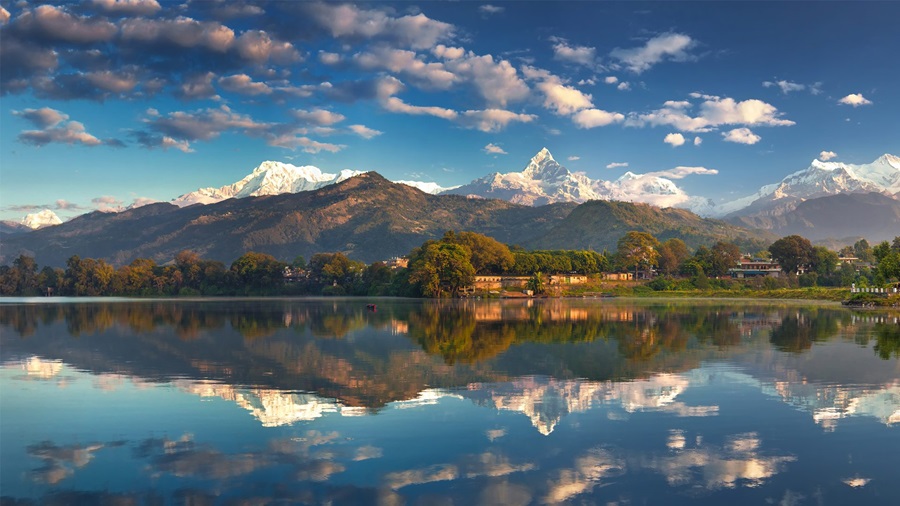
While not in immediate proximity to Muktinath, a journey to Pokhara is a highly recommended extension of the spiritual pilgrimage. Nestled beside the serene Phewa Lake and surrounded by the towering Annapurna range, Pokhara offers a tranquil escape from high-altitude adventures. The lakeside city beckons with its peaceful pagoda, reflecting in the calm waters, and the cascading Devi’s Fall, adding a touch of mystical allure. Whether boating on the lake, paragliding over the Himalayas, or simply savoring a moment of tranquility, Pokhara provides a serene contrast to the spiritual intensity experienced at Muktinath.
13. Mustang
As the spiritual odyssey expands into the secluded realms of Mustang, the landscape takes on an otherworldly charm. The Upper Mustang region, often referred to as the “Last Forbidden Kingdom,” presents a unique blend of arid desert-like terrain and ancient Tibetan culture. The walled city of Lo Manthang, surrounded by barren hills and dominated by the imposing Lo Manthang Palace, offers a glimpse into the region’s regal history. The centuries-old monasteries, such as the Thubchen Gompa and Jampa Gompa, echo with the chants of monks, preserving the spiritual legacy of this isolated kingdom.
14. Annapurna Circuit
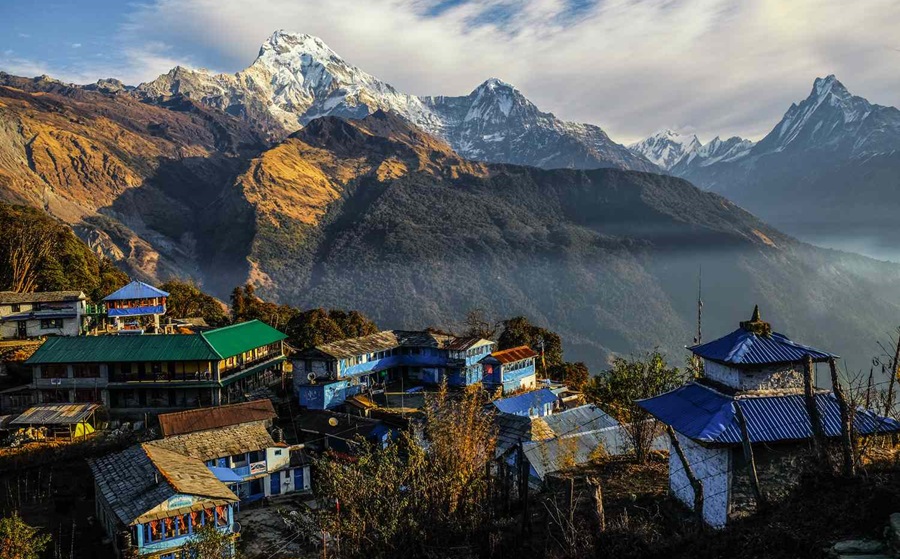
For those with a penchant for adventure, the Annapurna Circuit presents an opportunity to traverse a diverse range of landscapes. The trail winds through lush rhododendron forests, charming Gurung villages, and high-altitude meadows, offering an ever-changing panorama of natural wonders. Along the way, trekkers may encounter the sacred blue sheep and elusive snow leopards that inhabit these pristine Himalayan ecosystems. The journey through the Annapurna Circuit is not merely a physical feat but a symphony of nature that crescendos with every step.
15. Jwala Mukhi Temple
Deepening the spiritual connection, the Jwala Mukhi Temple stands as another beacon of divinity in the Mustang region. The temple, dedicated to the goddess Jwala, houses a perpetually burning flame that symbolizes the elemental forces of creation. Surrounded by the raw beauty of the Himalayas, this sacred site offers a moment of contemplation, where the eternal flame becomes a metaphor for the enduring spirit of the mountains.
As travelers traverse through this sacred landscape, they find themselves not only amid the Himalayas’ towering peaks but also on a spiritual journey that transcends the boundaries of time and geography. Muktinath and its surroundings, with their diverse facets and hidden wonders, beckon the intrepid traveler to immerse themselves fully in the awe-inspiring beauty and profound spirituality of this mystical Himalayan realm.
